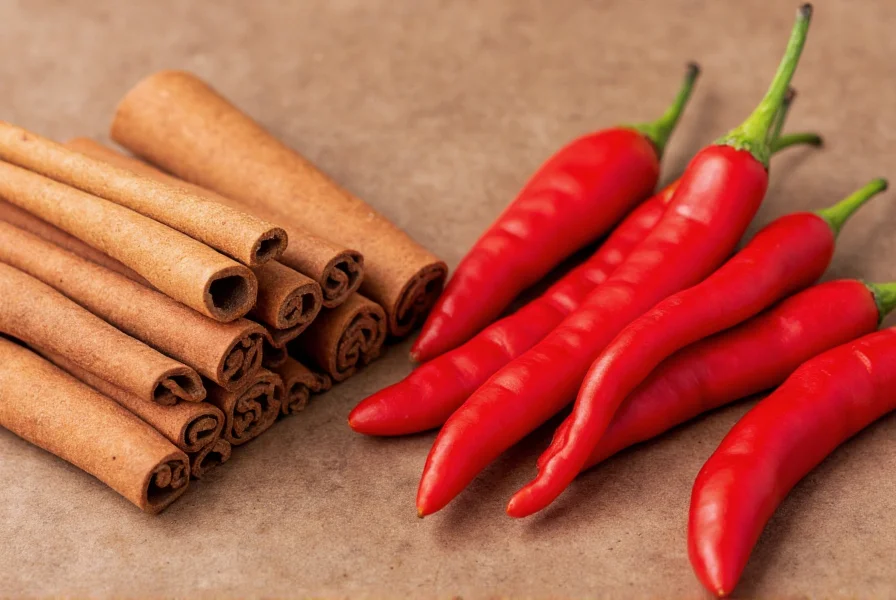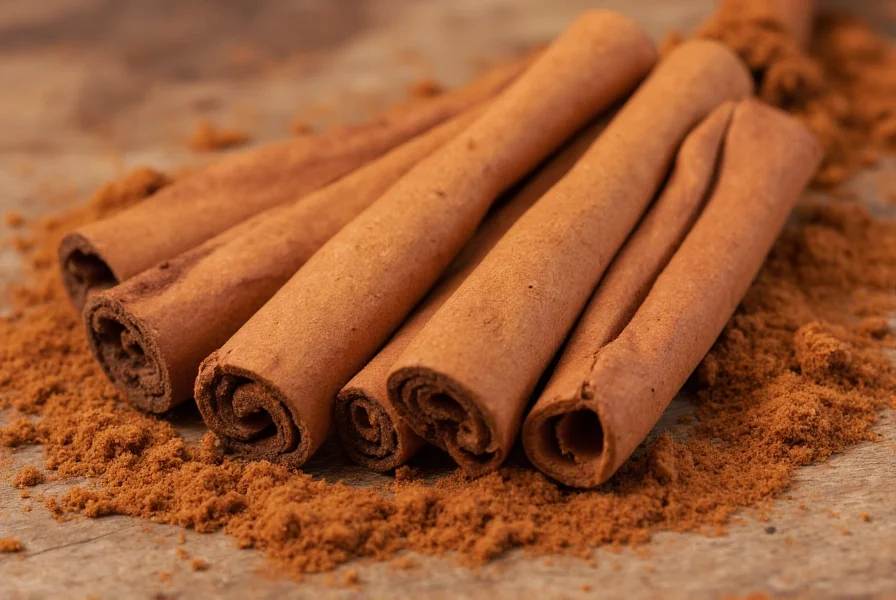Cinnamon often gets mislabeled as "spicy" due to its intense, warming sensation that can feel similar to heat. However, scientifically speaking, cinnamon is not spicy in the traditional sense. This common misconception stems from how our taste receptors interpret certain compounds.
Understanding the Science Behind Cinnamon's Sensation
When you consume cinnamon, you experience what food scientists call a "warming" rather than "burning" sensation. This happens because cinnamon's primary active compound, cinnamaldehyde (making up 60-90% of cinnamon's essential oil), activates the TRPV1 receptor in your mouth. This same receptor responds to actual heat and capsaicin—the compound that makes chili peppers spicy.
However, there's a crucial difference: cinnamaldehyde triggers a milder response that registers as warmth rather than pain. Capsaicin from chili peppers binds more strongly to TRPV1 receptors, creating that familiar burning sensation. Cinnamon's effect is more subtle and dissipates faster.
Cinnamon vs. Actual Spicy Ingredients: Key Differences
| Characteristic | Cinnamon | Chili Peppers |
|---|---|---|
| Active Compound | Cinnamaldehyde | Capsaicin |
| Scoville Heat Units | 0 SHU (no actual heat) | 2,500-2,200,000 SHU |
| Sensation Type | Warming | Burning |
| Duration of Sensation | Short-lived (seconds) | Prolonged (minutes) |
| Receptor Response | Mild TRPV1 activation | Strong TRPV1 activation |
Why People Mistakenly Call Cinnamon Spicy
Several factors contribute to the misconception that cinnamon is spicy like chili peppers:
- Linguistic confusion: In everyday language, "spicy" often describes any strong flavor, not just heat
- Sensory similarity: Both create mouth sensations that register as "hot" to non-experts
- Culinary context: Cinnamon appears in "spice" blends alongside genuinely hot ingredients
- Physical reaction: Some people experience mild burning or tingling that feels spicy
This confusion is particularly common among those unfamiliar with the scientific distinction between warming spices (cinnamon, cloves, allspice) and truly spicy ingredients (chilies, black pepper, ginger).
Cinnamon's Unique Flavor Profile Explained
Cinnamon delivers a complex flavor experience that includes:
- Warming sensation (from cinnamaldehyde)
- Sweet notes (especially in Ceylon cinnamon)
- Woody undertones (from eugenol and other compounds)
- Bitter elements (in higher concentrations)
When evaluating is cinnamon considered spicy in culinary terms, professional chefs distinguish between "heat" (from capsaicin) and "warmth" (from cinnamon). This distinction matters when balancing flavors in recipes—substituting cinnamon for chili peppers won't deliver the same heat experience.

Practical Implications for Cooking and Baking
Understanding that cinnamon isn't actually spicy helps in several culinary situations:
- Recipe substitution: Don't replace chili powder with cinnamon expecting similar heat
- Flavor balancing: Cinnamon's warmth complements rather than competes with actual spicy elements
- Temperature considerations: Cinnamon's flavor intensifies when heated, unlike capsaicin which remains stable
- Dosage awareness: You can use more cinnamon without overwhelming heat concerns
Food scientists note that cinnamon's warming effect actually decreases at higher temperatures, while capsaicin's heat remains consistent. This explains why cinnamon-heavy dishes like curries don't register as "spicy" despite containing multiple warming spices.
Common Misconceptions About Spicy Flavors
Many ingredients get mislabeled as "spicy" when they're actually warming:
- Black pepper: Contains piperine (warming, not spicy)
- Ginger: Has gingerol (warming sensation)
- Cloves: Eugenol creates warmth without heat
- Allspice: Complex warming profile, no actual spiciness
The key distinction lies in whether the compound triggers pain receptors (capsaicin does, cinnamaldehyde doesn't). This explains why you can consume significantly more cinnamon than habanero peppers without discomfort.
Conclusion: Setting the Record Straight on Cinnamon
While cinnamon creates a noticeable warming sensation that some describe as "spicy," it lacks the chemical properties that define true spiciness. Understanding why cinnamon feels hot without being spicy helps cooks and consumers make better ingredient choices. The next time someone asks is cinnamon a hot spice, you'll know to explain the science behind warming versus spicy compounds.
Frequently Asked Questions
Does cinnamon have any actual heat on the Scoville scale?
No, cinnamon registers 0 Scoville Heat Units (SHU) because it contains no capsaicin. The Scoville scale measures only capsaicin-based heat, which cinnamon lacks entirely. Its warming sensation comes from cinnamaldehyde, which doesn't register on the Scoville scale.
Why does cinnamon burn my tongue if it's not spicy?
Cinnamon's cinnamaldehyde activates the same TRPV1 receptor as capsaicin, but more mildly. In high concentrations (like during cinnamon challenges), it can temporarily overwhelm these receptors, causing a burning sensation. Unlike chili burns, cinnamon's effect is short-lived and doesn't involve actual tissue damage.
Can cinnamon be used as a substitute for spicy ingredients?
No, cinnamon cannot substitute for genuinely spicy ingredients like chili peppers. While it adds warmth, it lacks the capsaicin that creates true heat. Using cinnamon instead of cayenne in a recipe will yield completely different results—warm and sweet rather than hot and fiery.
Which type of cinnamon has the strongest warming sensation?
Cassia cinnamon (the more common variety) typically has a stronger warming sensation than Ceylon cinnamon due to higher cinnamaldehyde content (up to 90% versus 50-60% in Ceylon). However, neither variety produces actual spiciness—just varying degrees of warmth.
Does the warming effect of cinnamon serve any biological purpose?
Yes, the warming sensation from cinnamaldehyde serves as a natural defense mechanism for the cinnamon plant. It deters certain insects and animals without being toxic to mammals. This evolutionary adaptation helps protect the plant while still allowing animals to disperse its seeds.











 浙公网安备
33010002000092号
浙公网安备
33010002000092号 浙B2-20120091-4
浙B2-20120091-4